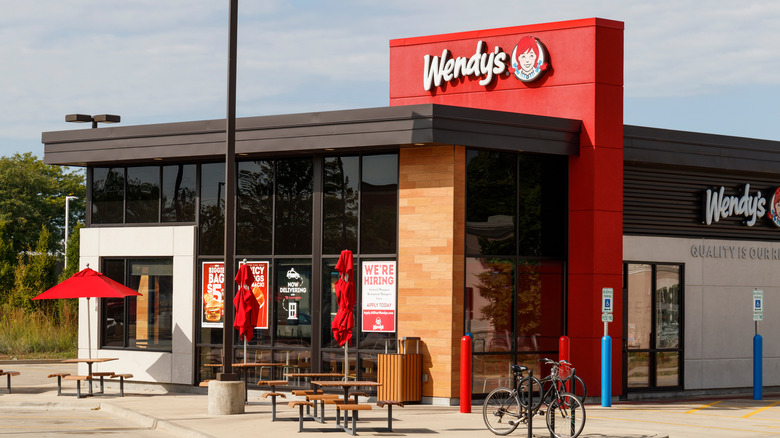Wendy's Plans To Cut Greenhouse Gas Emissions Nearly In Half
As more and more consumers look to sustainable brands, Wendy's seeks to improve its carbon footprint. Over the years, people have called on fast food chains to change course and pursue a more sustainable future. The BBC reported in 2019 that a group of investors complained to a bevy of large fast food restaurants, including Wendy's, about their water consumption and greenhouse gas emissions. Part of the reason for investors' gripes is that agriculture, particularly raising beef and chickens, could account for nearly three-quarters of greenhouse gas emissions by mid-century.
Sustainability concerns have also affected people's menu choices at restaurants, according to a clinical study in the JAMA medical journal. Many consumers care about the eco-friendliness of their food. Considering past pressure from investors and consumers' attitudes, it makes sense that Wendy's has publicized moves to use more sustainable packaging, lower energy usage, and conserve the water it takes to run restaurants. According to the company, it lowered emissions by more than 6% between 2019 and 2020.
In early 2021, Wendy's said that it planned to follow a science-backed plan to reduce greenhouse emissions in three parts to hit its carbon-reduction targets, notes the non-profit think tank Ceres. By the end of 2022, the goal was to come up with concrete numbers for the reduction of carbon emissions while improving sustainability. Now, Wendy's has announced a more specific plan based on the company's 2021 announcement, including at the agricultural level, according to QSR Magazine.
Wendy's wants to reduce emissions dramatically by 2030
Using 2019 measurements as the base year, Wendy's announced in early February 2023 that it expanded its 2021 Science Based Targets initiative (SBTi) to outline the goals of the project, says QSR Magazine. It wants to slash greenhouse gas emissions by 47% before the decade is out. Several of the fast food brand's goals include wide-ranging steps. Wendy's wants to have 35 Florida restaurants rely completely on solar power by mid-decade, according to Duke Energy. If that initiative goes well, the restaurant chain will expand on that by collaborating with restaurant owners on the best way forward.
Wendy's also aspires to remove 7.2 million metric tons of carbon dioxide from the atmosphere (an amount produced by more than 1.5 million internal combustion engines) by lessening the power consumed at restaurants and along the supply chain. Other plans include collaborating with suppliers, farmers, franchisees, restaurant owners, and utility companies to make the entire scope of Wendy's products and buildings more sustainable by 2030.
Liliana Esposito, Wendy's chief corporate affairs and sustainability officer, told QSR, "To reach these goals, Wendy's will work throughout its system, including company operations, and cooperatively with franchisees and suppliers, to turn commitment into action." If successful, Wendy's could in theory lower its costs by exploring sustainable options for its entire restaurant chain such as sourcing food locally, which QSR has previously noted is a step that restaurants can take.

